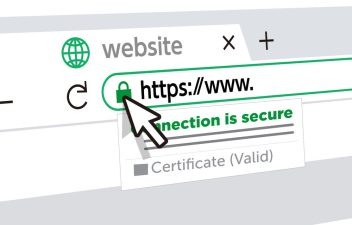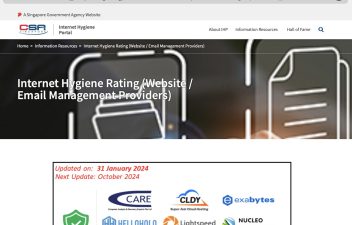Time changes many aspects of life, and business is no exception. With advancements in technology and networking capabilities, the traditional methods of raising brand awareness and marketing are slowly taking a backseat to give way to more modern strategies, like establishing an online presence via business websites.
Nowadays, the ease of access to immediate information on the Internet has changed the habits of the modern consumer; if they need something, the first thing they will do is “Google” it online. Businesses must strive to get their brand name onto the top search results to reach a broader target audience and remain competitive.
But how can this be achieved? It all comes down to making a website and getting it up online. Read on about an overview of the step-by-step processes necessary for the first stage in establishing an online presence: putting up a business website on the Internet.
1. Determine the purpose of the website

Before doing anything else, business owners must settle on the primary purpose that their online platform will serve: either as a space for information about the company and its services, an e-commerce outlet, or something different.
No matter the purpose, the most important thing is to ensure that it immediately and plainly communicates what the company does and what it can offer straight away on the homepage. Customers nowadays do not have the time or patience to root around and find out for themselves what a particular business offers, so ensure that the company website expresses what it can provide the moment they reach the landing page.
2. Choose the right domain name

Getting the website name right serves many advantages for a business and its branding. In short, it makes it easier to attract customers to click on your site when it comes up on the search engine results as well as play a role in several business objectives, such as achieving higher ranking results and protecting the business and its customers.
Organisations can gain a lot by finding the right name before domain name registration. Vice versa, there is also much more to lose by being careless in doing so. Hence, it is recommended to put more thought into ensuring the chosen name is the perfect fit for the business.
3. Engage with a web hosting provider

Websites, commercial or otherwise, need to be stored and hosted on a server for the public to access. Servers are specialised hardware and are essentially more powerful computers capable of handling requests from multiple users looking to access your business website.
While it is entirely possible to purchase physical hardware to host the site in-house, its costs are far from economical and make more sense on an enterprise scale. Depending on what the company wants to achieve and the budget it can spare for cloud hosting, business owners should select the plan that offers only the essentials for their current needs. If requirements ever change in the future, rest assured that the flexibility and scalability of cloud hosting can easily accommodate such needs.
4. Create, test, and publish your site

Good websites are more than just static homepages. Creating multiple pages dedicated to a different aspect of the business is widely regarded as best practice. It is advisable to focus on the essentials first, such as the contact page, to ensure that it contains all the up-to-date and relevant information that customers can use to reach out to the company directly. Moreover, have a checklist for each page and make sure that they pass the following criteria:
- Supports the primary goal of the whole website
- Has a clear purpose
- Includes a call to action buttons or link, typically having texts such as “contact us”, “learn more”, “sign up”, “add to cart”, and “buy now”.
Since creating good custom websites from scratch takes a lot of experience and technical know-how, it would be more economical to hire a web developer to make one or a company that specialises in website creation. However, if the business website is not all too complicated and will only contain a handful of pages, such as sites whose primary purpose is to be a platform of information about the company, then making it yourself using free website builders is an entirely viable option.
Once the website is functional, please test it out first before anything else. Consumers have plenty of ways to access your site, so it is advised to test it on all major browsers in use today and prioritise its mobile-friendliness due to a couple of reasons:
- Internet access through smartphones continues to become the go-to for many
- Search engines like Google have migrated to mobile-first indexing, which means it will prioritise the performance of mobile versions of websites in search result rankings
After every feature on every page is guaranteed to work as intended, images load swiftly, internal links direct to the correct pages, and many other tests pass, all that remains is to let the web hosting provider publish it on their end and announce that the site is officially live.
5. Maintain the site’s performance

After the website goes live, that does not mean there is nothing that needs more to be done. Updating the website is key to staying relevant. One popular way of doing so is by posting content, such as blog articles that touch on relevant and current industry events or something simple like informational articles about the company’s offerings.
Maintenance is also crucial to prevent cyberattacks and avoid compromising the business and its customers. Make it a priority to keep all production software and related add-ons up to date every month, even if the website host’s security is already robust.
Conclusion
Starting a business website is an excellent, low-cost investment that offers growth-promoting benefits like establishing credibility and reaching a wider audience. By keeping it up to date with new content and free of technical issues that could inconvenience visitors, businesses will no longer have to worry about being ‘non-existent’ to present and future clients.










